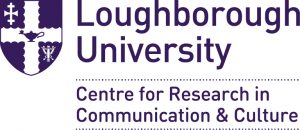
Dr James Dennis
Senior Lecturer in Journalism in the School of Social, Historical and Literary Studies at the University of Portsmouth.
Email: James.Dennis.2010@live.rhul.ac.uk

Section 7: Social Media
- Leave versus Remain: the digital battle
- The results are in and the UK will #Brexit: What did social media tell us about the UK’s EU referendum?
- Automatic polling using Computational Linguistics: more reliable than traditional polling?
- Impact of social media on the outcome of the EU referendum
- Talking past each other: the Twitter campaigns
- Political memes and polemical discourse: the rise of #usepens
- E-newsletters, persuasion and the referendum
- Boris, Brexit or bust
“People. Power. Change.” These three words represent the organisational mantra of the non-profit, political activist movement 38 Degrees. Over 3 million British citizens are affiliated to the group and use digital media to set its strategic priorities. Those involved are not tied into one fixed ideology, but pick and choose those issues to which they relate. By providing choice over the conditions of their participation the support behind each campaign tends to be fairly uniform. But what happens when an issue is so significant that it cuts across the interests of the entire membership and the “people” don’t agree?
We know from past research that tangible evidence of policy change is a key factor for understanding why citizens engage with the movement. But this campaign did not allow for such a real-world impact. Instead, we see the importance of members seeing evidence of their views being enacted upon by the leadership.
The referendum on whether the United Kingdom should vote to remain in or leave the European Union divided friends, families, and communities. The group’s vast network of supporters reflected these splits. As is customary for 38 Degrees, the leadership polled their members on how the movement should respond to the referendum. Over 230,000 voted, with 59 per cent indicating that they wished to stay in the EU while a significant minority—28 per cent—would be backing leave. As a result, 38 Degrees did not pick a side during the referendum. However, there was evidence of widespread agreement on the role that the group should play within the referendum campaign, with 97 per cent outlining their support for neutral fact-checking of the claims made by the Remain and Leave campaigns.
This campaign took a number of different forms. The leadership coordinated a crowdfunding campaign for Full Fact, a non-partisan charity that checks the accuracy of claims made by politicians, the media, and pressure groups: lobbying for corrections where necessary. Leaflets and beer mats were distributed alongside a series of videos that outlined the findings of their research. 38 Degrees also worked with Crowdpac to create a quiz to help citizens determine where they stand on the EU question. Rather than telling participants how to vote, the quiz compared their opinions against the main arguments from both sides of the EU debate. Over 230,000 people took part.
Members also took an active role, with 30,000 joining the “Fact Squad.” This group received live fact-checks over WhatsApp, with the intention of sharing this information with others. This tactic was both innovative and potentially impactful, as research showed that recommendations from family and friends were important sources of information during the campaign period. Crucially, 38 Degrees focused on providing advice and guidance rather than actively persuading citizens how to vote.
This campaign illustrates some important characteristics of 38 Degrees. It shows that the movement is not a “hard-nosed, left-wing Labour-supporting organisation.” Many of its members possess a wide range of views. When they are brought together en masse then conflicts between them can begin to emerge. During my research I organised a meeting with a group of members. In this conventional, face-to-face setting some of the fundamental differences on key policy issues, like climate change, were abundantly clear. So what did unify these activists who were so divided?
We know from past research that tangible evidence of policy change is a key factor for understanding why citizens engage with the movement. But this campaign did not allow for such a real-world impact. Instead, we see the importance of members seeing evidence of their views being enacted upon by the leadership.
This helps us to understand the enduring appeal of this organisational form. The leader-led campaigns bring together the experience and judgment of a handful of political professionals with large groups of loosely connected citizens, who use widely available technologies to set the overall priorities of the movement. As a result, many of the group’s successes are a result of effective lobbying from those who may not actually agree with the position taken. I suspect this may have been the case in this campaign. But ultimately this is how the staff at 38 Degrees put “people power” into practice. By using digital technologies rank and file members are making the important decisions, not the staff based in London. Although the levers of power may remain the same, those who operate them, and the means by which they do so, are unique.


